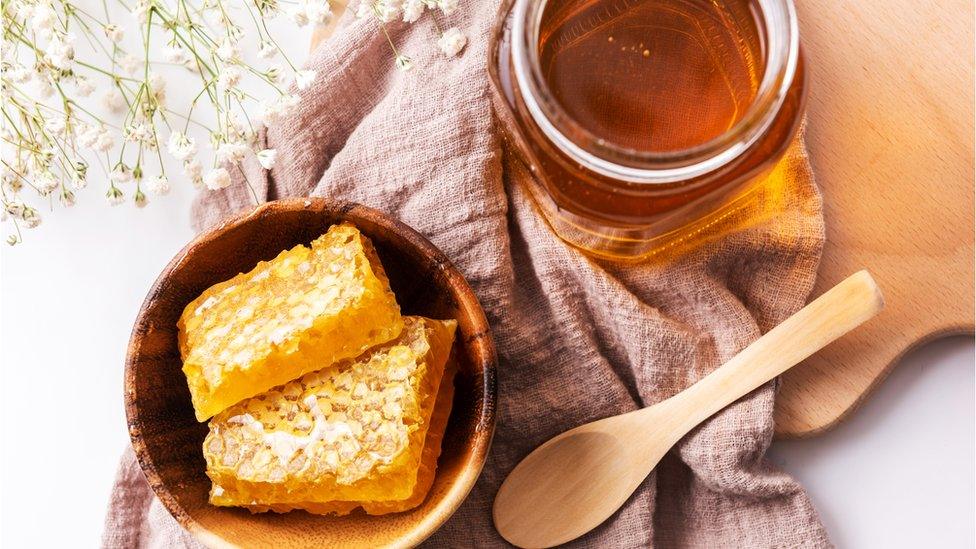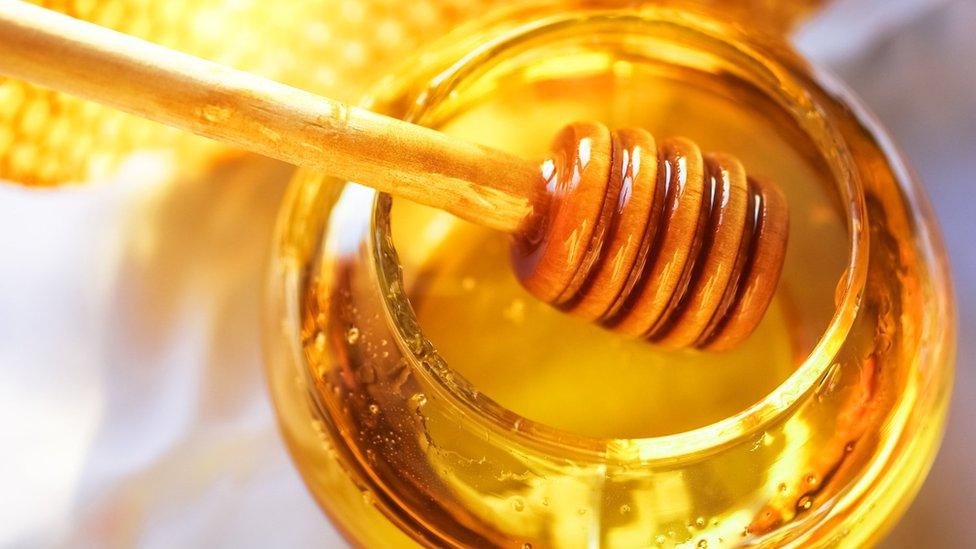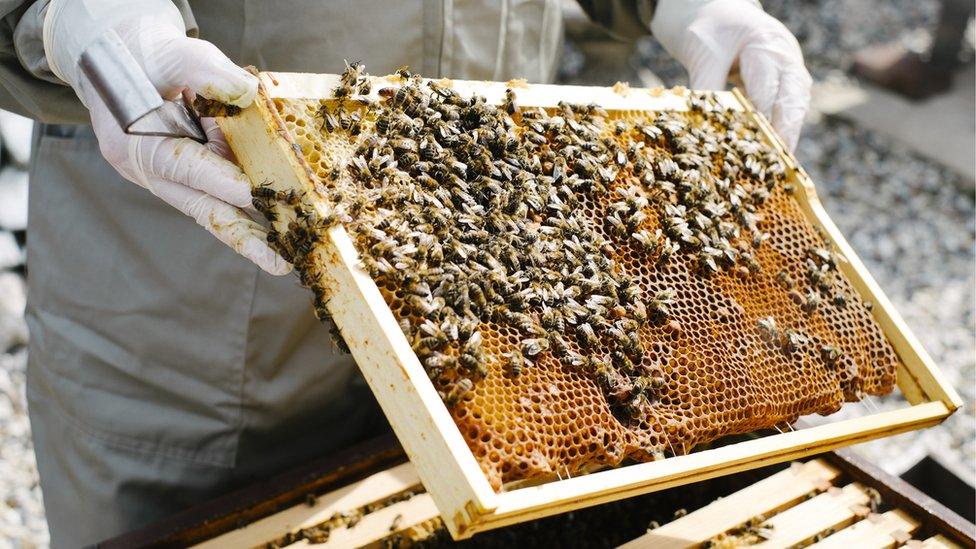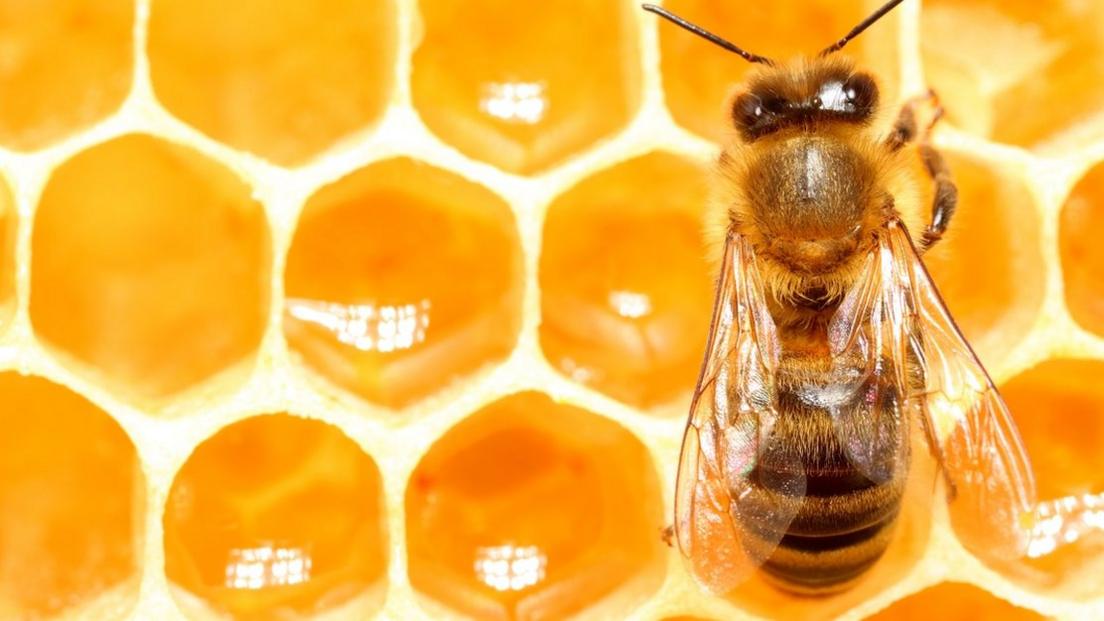From hive to home - new EU rules to track where honey comes from
- Published
- comments

Have you ever wondered where your honey comes from?
Well the European Parliament has just agreed to some new rules that would allow people to see the journey of their honey - from hive to home.
This would mean that labels on jars of honey would track where the honey has been - for up to 5,000 miles.
Beekeepers and honey makers in the UK have said they think the UK should follow these new rules, but government officials have said they need more time to work out a plan.
So why do people want to do this?
Honey fraud

Honey is one of the most common foods to be targeted by fraudsters - in this case fraud means lying to pretend that a substandard product is the real thing.
Last year an investigation by the European Commission found that 46% of the honey tested was thought to have been tampered with.
Honey fraudsters have been known to dilute - or water down - honey using cheaper sugar syrups.
This is bad for regular people buying honey at their local supermarkets because they are not aware that the honey they're buying is not proper honey.

Under current rules in the EU and UK, there is no official requirement to identify the country some honey came from - if it is a mix of honey from more than one country.
However under the new EU rules, the country will have to be labelled, and research is underway to work out how to digitally track honey's journey through the supply chain.
The Food Standards Agency - a UK government department that looks after food health and safety - says more work is needed to find reliable tests to detect honey that has been diluted.
A Defra spokesperson said: "We are aware of the recent EU proposals in relation to honey and, while we understand there is a provisional agreement on the proposals, they are not yet fully adopted."
- Published29 April 2020

- Published19 May 2023

